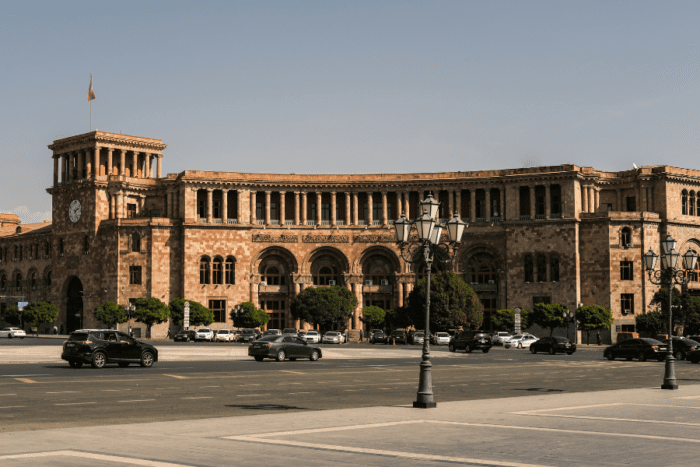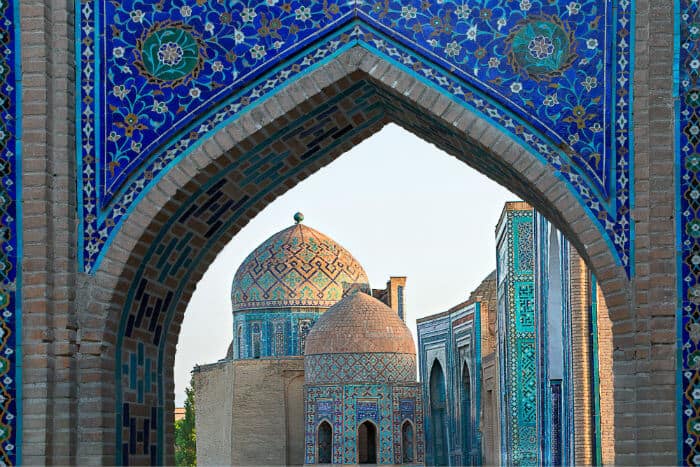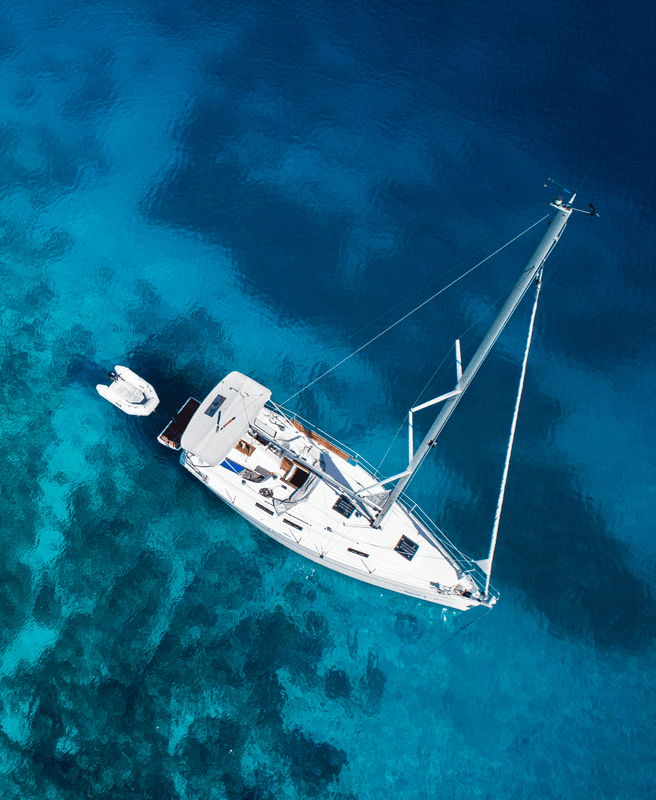Highest Global Interest Rates at Offshore Banks in 2025
January 7, 2025
In today’s yield-starved environment, finding any kind of return for your cash on hand has become increasingly difficult.
Depositing your money in banks with developed markets, such as those denominated in US dollars, euros or British pounds, might seem a stable addition to any financial portfolio. Certainly, it’s a solid option that deserves consideration.
However, while overseas banks have historically offered higher interest rates, there are alternatives that potentially offer far more lucrative rewards.
Offshore banking presents a strategic option to expand and diversify your asset holdings. It can help protect your wealth, open the door to new investment opportunities, give you exposure to multiple currencies and enable tax advantages as part of a broader financial strategy.
To that end, you should be aware there are banks in developing countries that urgently need foreign currencies like euros and US dollars. In fact, they’re so keen to attract those kinds of funds that they’re often prepared to offer significantly higher deposit rates in return, which presents savvy investors with an enticing opportunity.
Staying abreast of money markets and the financial world can be challenging. Keeping up with important industry news, such as new policies introduced by major central banks or financial institutions, is difficult enough, but knowing the details about factors like fees, early withdrawal penalties, yields or account rates requires a level of research and scrutiny that few people have the time or inclination for.
That’s where Nomad Capitalist comes in. We offer valuable insights on both our website and YouTube channels on how to legally bank offshore, giving you possibilities for building wealth and protecting your assets internationally.

The World’s Highest Bank Interest Rates
In March 2022, the United States Federal Reserve (the Fed) raised interest rates to a range of 5.25% to 5.5% and have largely remained at that level.
In the face of rising inflation, continuing efforts to stabilise prices have been reflected in deposit rates for high-yield savings accounts.
Attempts to curb US inflation could make those rates artificially high, especially considering that monetary policy is fickle and subject to change.
In April 2024, the Fed indicated it would pump the brakes and make a series of interest rate cuts this year. The United Kingdom’s equivalent of the Fed, The Bank of England, is following a similar pattern of inflation-controlling rate hikes, with the current figure at 5.25%.
So, while interest rates remain artificially high for now when the inevitable fall happens, it could be time to reconsider the reasons for holding most of your cash in a domestic bank.
A primary reason individuals rely on domestic banks is the perception that they are safer and more reliable.
However, at Nomad Capitalist, we beg to differ. In many cases, you can find offshore banks supported or owned by larger banks or wealthy families and are just as safe, if not safer, than these Western domestic banks.

How to Earn the Highest Interest Rates
Other currencies can appreciate or remain flat against the US dollar, which means holding these currencies at higher interest rates is beneficial.
Typically, these countries have relatively low risk but are perceived as high risk by the average person. Basically, you can get paid for taking one of two risks: institutional risk or currency risk. Those are both substantial risks, but with careful planning, you can eliminate both.
After all, most people outside the Western world are banking with confidence and are not worried about having their money returned to them. By investing in stable currencies and well-managed offshore banks, not only is your money safe, but you also stand to earn higher interest by taking a minimal amount of additional risk. In return, you may even get far more banking privacy.
So, let’s explore the countries paying the highest interest rates on your term deposits. But first, a disclaimer: the information here is based on personal experience and opinions. You should always confirm interest rates and other material facts for yourself.
Banking and investing in foreign countries and currencies carries risk, and no blog or article can take your risk tolerance or personal situation into account. Use this information as a guide, but don’t rely solely upon it.
Countries with the Highest Interest Rates
Georgia
Let’s start in Georgia’s capital of Tbilisi. We’ve said before at Nomad Capitalist that Georgia is quite possibly the easiest place in the world to open a bank account.
While many banks are still getting to grips with the United States Foreign Account Tax Compliance Act (FATCA) and continue to make the account opening process unnecessarily slow for US citizens, you can still easily open an account in Georgia if you know where to go.
What’s more, Georgia offers among the highest interest rates for deposits made in its local currency.
Georgian banks have recently lowered deposit rates on US dollars, which seems odd, considering that US banks have raised theirs. If your goal is to hold dollars, you can do better elsewhere.
However, if you’re open to holding Georgian lari, the deposit interest stood at around 10.93% in June 2024. While the lari lost some of its value against the dollar a few years ago, it has remained relatively steady.
The leading banks in Georgia – TBC Bank and Bank of Georgia – are listed on the London Stock Exchange (LSE) and currently have competitive deposit rates. Both TBC Bank and Bank of Georgia offer rates as high as 10% for 12-month deposits. The rates apply to deposits made in Georgian lari and may be slightly lower for non-resident accounts.
UAE-owned Terabank currently offers an annual interest rate of 10.5% on deposits withdrawn at the end of a 12 to 14-month term. It also has a convenient branch in the Biltmore Hotel, although their process is slower.
Smaller banks may offer similar rates, but generally, we’ve found these to be the best. Liberty Bank, the government’s designated bank for handling pension payments, is often mentioned as an alternative with its higher interest rates, but you’ll pay for the privilege with unsatisfactory service.
Bear in mind that many of these smaller banks, which are used to dealing with locals, may struggle to understand why a foreigner wants to open a term deposit in Georgia and may reject your application.

Armenia
Like Georgia, Armenia offers high interest rates on its local currency, the Armenian dram. A forex trader who speaks with our team here at Nomad Capitalist likes the recent fundamentals of the dram against the dollar, which has very low volatility. Armenia’s reform-minded government has helped buoy the currency further.
Opening a bank account in Armenia is relatively simple. In fact, if you’ve opened an account anywhere in the former Soviet Union, you’ll likely see a lot of similarities in how things are done. There are several decent banks, although some have a less modern feel owing to Armenia’s orientation toward Russia.
Two exceptions are Ameriabank and Evocabank.
Evocabank is a modern and stylish bank with trendy advertisements painted across Yerevan and a website that stands out for its unusual design. Although a smaller bank, it’s growing quickly and, thus, is very particular about opening new accounts.
Nevertheless, it offers an attractive interest rate of 9.5% on one-year term deposits in dram, though there is an offer of 10.75% interest over the same period if the deposit is managed through the EvocaONLINE system.
While Armenian banks don’t offer compelling rates on US dollar deposits, they do provide a unique opportunity for internationalisation. While any bank worth its salt offers dollars and euros, a relatively small number offer the ability to hold Russian currency.
Interest rates on the ruble (5.5% if held for 12 months) are a bit underwhelming, given past volatility. But, if you need or want access to the rubble as an alternative currency, Armenia is a great place to do it.

Azerbaijan
We might as well list all the Caucasus countries so Azerbaijan rounds out the list. Opening a bank account in Baku can be difficult due to the language barrier and lack of English fluency compared to Georgia or Armenia.
However, Azerbaijan is wide open to foreigners opening accounts or travelling there, and the country now offers an easy e-visa program. Azerbaijan has a lot of banks, and although at least one of them has been taken over by the central bank, the International Bank of Azerbaijan and AccessBank are among the biggest and easiest to work with, even if there are foreign banks operating there, too.
AccessBank currently offers 12% on a 12-month deposit in the local currency, Azeri manat, if you take the interest at the end of the term. Many foreign banks allow you to take interest upfront or intermittently in exchange for a lower rate. While the manat suffered declines against the US dollar several years ago, just as the Georgian lari did, it has historically been less volatile.

Cambodia
Nomad Capitalist founder Andrew Henderson has advocated investing in Cambodia for over 15 years. Cambodia has a small domestic market but is now experiencing huge investments from China. Thanks to Chinese investment, the beach town of Sihanoukville saw housing prices double in just one year.
What many people don’t know, however, is that Cambodia has also seen an influx of banks. Just about every bank, from Malaysia’s RHB and CIMB to Public Bank and Bank of China, joined the longstanding foreign banks already serving Cambodia. There are also several good local banks, many of which offer excellent interest rates.
Banking in Cambodia offers a unique proposition: not only are US dollars in high demand, but the local Cambodian riel is essentially as good as the US dollar. The riel has hovered just above 4,000 to the dollar for the past decade and we don’t see that changing much.
The biggest challenge you’ll have in Cambodia is bureaucracy. Most banks want you to have at least a business visa and, at worst, a local referral to open an account.
Canadian-owned ABA Bank in Cambodia currently offers a 4.25% interest rate on one-year US dollar deposits if the interest is paid at the end of the term. If you choose to deposit in Cambodian riel, the interest rate increases to 5.75% under the same conditions. This differential in rates offers a moderate premium for choosing the local currency, which might be an appealing option given the relative stability of the riel.
Microfinance institutions in the region, such as the Korean-owned Woori Bank, generally provide even higher rates. As of the last update, Woori Bank was offering 7.25% on US dollar deposits.
These institutions are known for their competitive rates, particularly in markets like Cambodia, where banking dynamics are unique compared to more developed economies.
If you can find a good microfinance institution with good ownership, you can create excellent risk arbitrage, although you’ll need to be on the lookout for teaser rates like these.

Turkey
Back in the early 2010s, banking in Turkey was a lot easier. You could simply walk into a bank branch and open an account. Today, the process is complicated by the requirement for a Turkish tax ID number, a condition that local Turkish experts report that every bank follows diligently.
Add that to the ongoing free fall of the Turkish lira plus the geopolitical risk and the idea of banking in Turkey may turn you off. However, this article is about high interest rates, and, in that regard, at least, Turkey certainly delivers.
Turkey has plenty of banks, but our team at Nomad Capitalist has a soft spot for Garanti, which offers anywhere from 25.5% to 45.5% depending on how much you deposit and how long you leave it there. You can enjoy double-digit rates while waiting for the lira to appreciate, although analysts don’t see that happening in the near future.
Apart from the bank’s high returns, one thing that is interesting about some Turkish banks is the ability to hold gold and a variety of hard-to-get currencies. Garanti, for example, offers term deposits in US dollars, euros, British pounds, Swiss francs and Japanese yen.
The rates won’t be as good, but you can access these currencies with nominal deposits that are often available only to priority banking customers in other countries.

Mongolia
For years, offshore websites have been exalting the virtues of banking in Mongolia, and we even made a video about opening a bank account there.
As always, Nomad Capitalist has been there and done exactly that, and the truth is, the experience was somewhat painful. For one thing, almost nobody speaks much English in Mongolia outside of the Shangri-la Hotel, and even if you can find a banker you can communicate with, they likely won’t understand why a foreigner would visit Mongolia to open a bank account.
In our opinion, the two best banks, Khan Bank and Golomt Bank, open accounts for foreigners. When you deposit in Mongolian tugriks, you’ll earn 12.8% with both Khan Bank and Golomt Bank, depending on the term length.
And there’s the rub. Mongolia is an interesting but somewhat confusing place. It’s not particularly easy or cheap to get to, nor is it very exciting. Few people speak English, and some experts aren’t exactly enthusiastic about its banks. But at least a couple of the banks offer decent returns, so the country remains an interesting, if not an exotic, option.
Uzbekistan
The Uzbeki som, Uzbekistan’s somewhat obscure national currency, has been steadily losing value against the US dollar. Some years back, it suffered a one-day loss of half its value. It’s probably not the place you want to open a term deposit.
Despite its flawed currency, Uzbekistan’s banks offer one bit of solid reassurance that no bank has been liquidated with unsettled liabilities since the country gained independence in 1991.
Still, only a few of the over thirty banks in Uzbekistan have functional websites that display interest rates or offer online banking services. If you are open to taking a risk with exotic post-Soviet currencies, then one of the better digital banks, Asaka Bank, will offer you a 16% interest rate for just over a year’s deposit in the Uzbeki som.
Other banks, such as Asia Alliance, offer 19% for 12-month term deposits.
Bear in mind these rates are part of specific campaigns and conditions provided by the bank and, of course, subject to regular change.

Countries with the Highest Interest Rates: FAQs
In Turkey, banks currently offer significantly high interest rates on savings accounts, with some
banks providing annual yields ranging from 25.5% to 45.5%, although this comes with
geopolitical and economic challenges.
The key interest rate in Switzerland stands at 1.25%, which is lower than many other major
European banks.
Countries such as Georgia, Azerbaijan, Armenia and Uzbekistan currently offer some of the
highest interest rates on deposits, with rates reaching as high as 19% in Uzbekistan and 12% in
Azerbaijan.
Countries like Switzerland, Singapore, the Cayman Islands and Belize are regarded as some of
the best options for opening offshore bank accounts due to their banking stability and favourable
regulations.
Explore Your Offshore Banking Options
So, there you have it. Attractive deposit interest rates in some of these destinations need to be offset by the practical challenges of banking there.
Other banks in other destinations offer lower-risk options with convenient and relatively hassle-free offshore banking, so if you’re not quite ready to bank in Mongolia, then check out our Best Offshore Banks for 2025.
If you are serious about offshore banking, then you’ll need more specific guidance. The team at Nomad Capitalist is ready to help you. We help high-net-worth entrepreneurs and investors create a bespoke strategy using our uniquely successful methods.
Become a client today, and we’ll help you keep more money, create new wealth faster and be protected from whatever happens in just three steps.


Does Puerto Rico Pay Taxes to the US?
It’s a common question and one that often fuels confusion, debate, and a fair share of misinformation – Do residents of Puerto Rico actually pay US federal taxes? When most people think of US tax obligations, they naturally assume they apply uniformly across all US citizens. But when it comes to Puerto Rico, things are […]
Read more

Zug Canton Taxes: The Ultimate Destination for Wealth Management in Switzerland
Switzerland’s global reputation is built not just on stunning views of Alpine peaks and serene lakes but also on a foundation of exceptional quality of life, world-class infrastructure and investor-friendly tax policies. The results speak for themselves: efficient public transport seamlessly links cities and villages; the standard of living regularly ranks among the highest in […]
Read more

How Smart Investors Use Venture Capital to Build Wealth
Big companies like Google, Amazon, Facebook and Apple all started out as bold ideas backed by venture capital. Decades later, the same firms are household names, as familiar to most people as electricity, the internet, or the telephone. But hindsight is a fickle friend. The truth is, it wasn’t always so obvious they’d succeed. These […]
Read more




